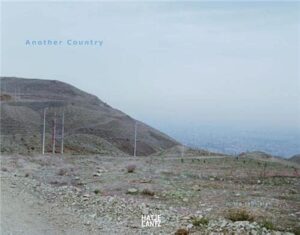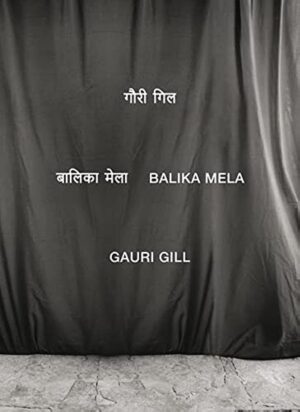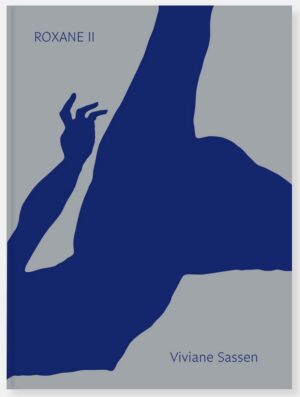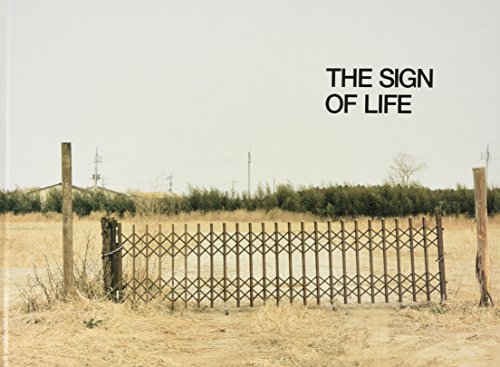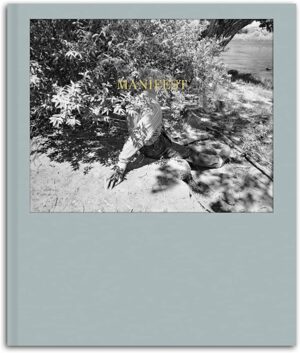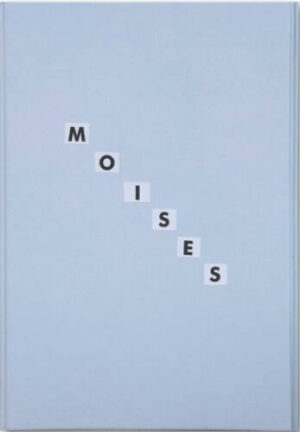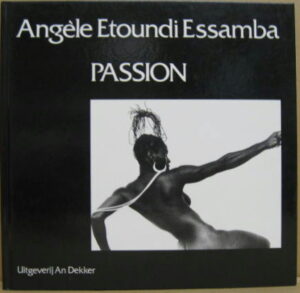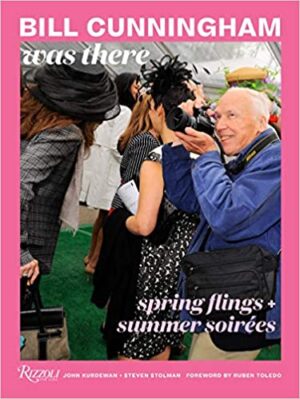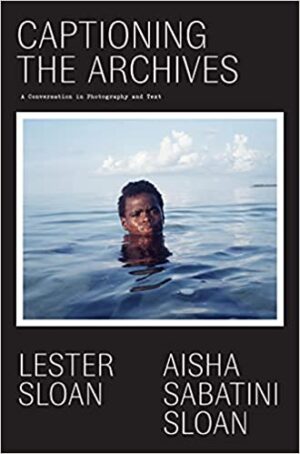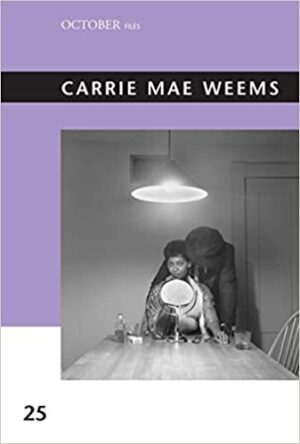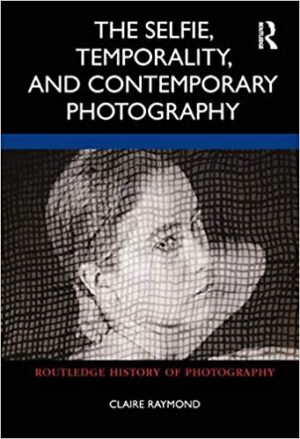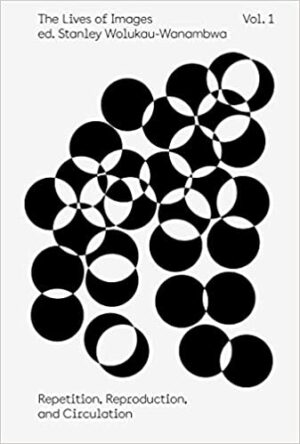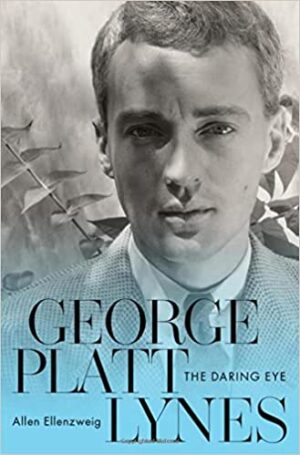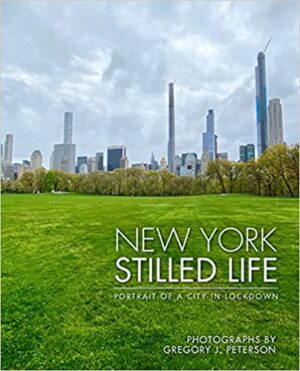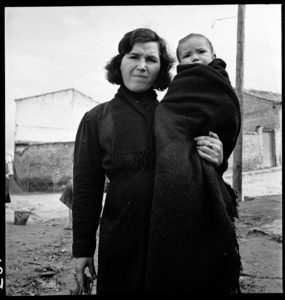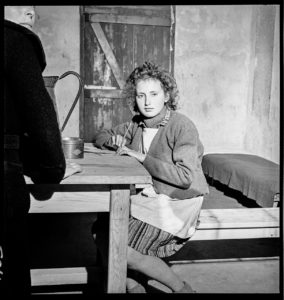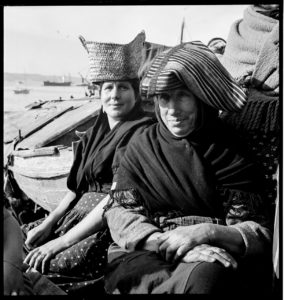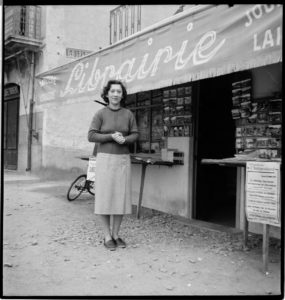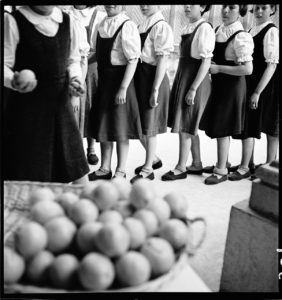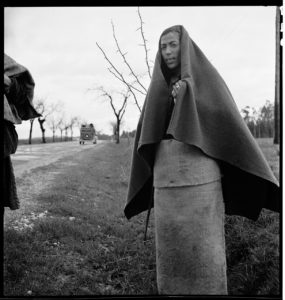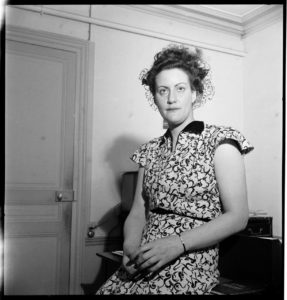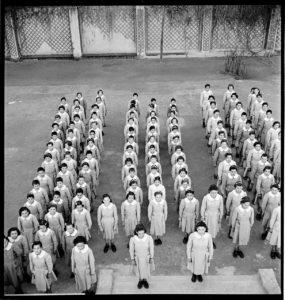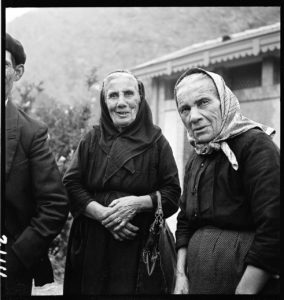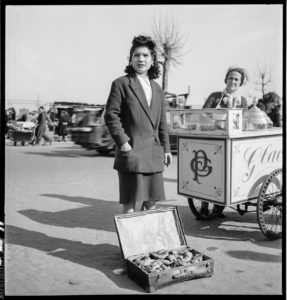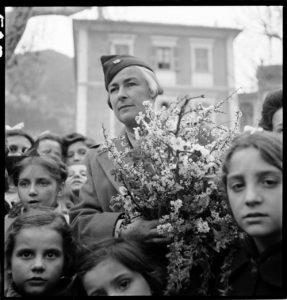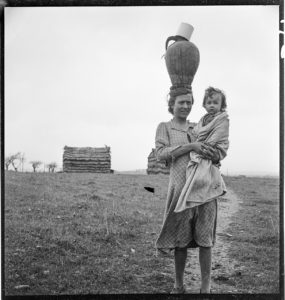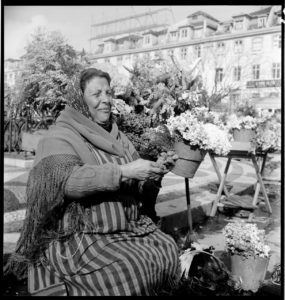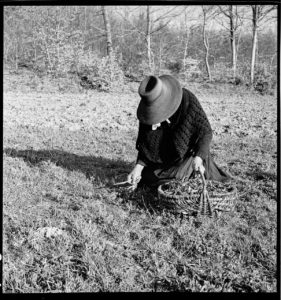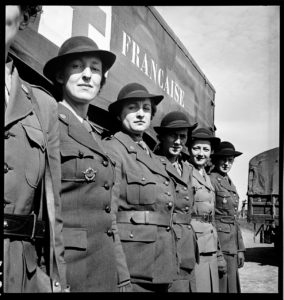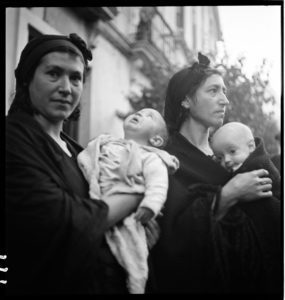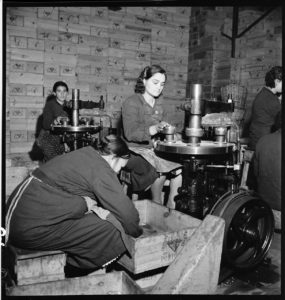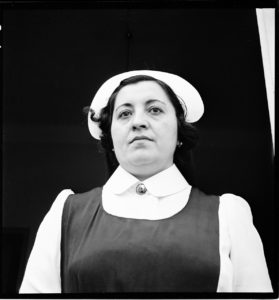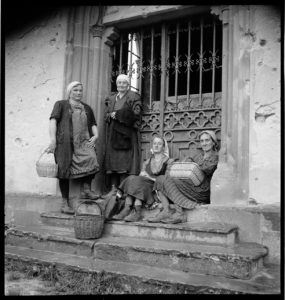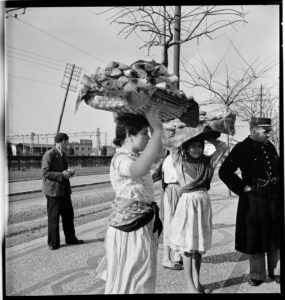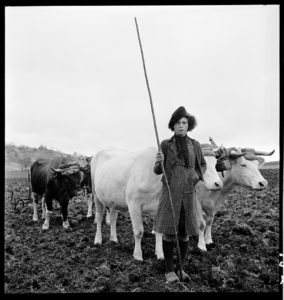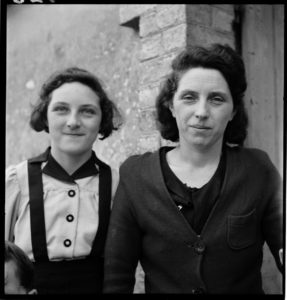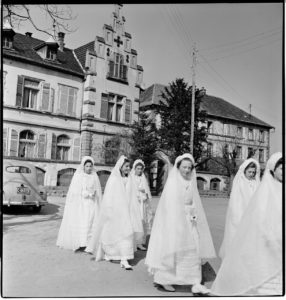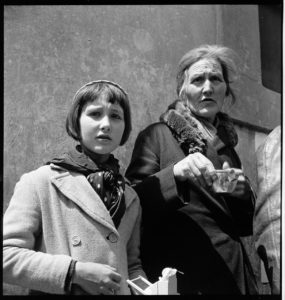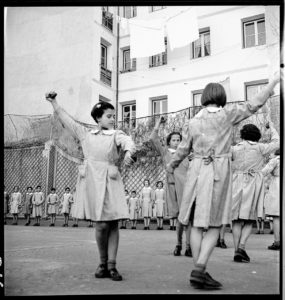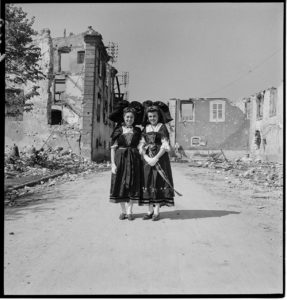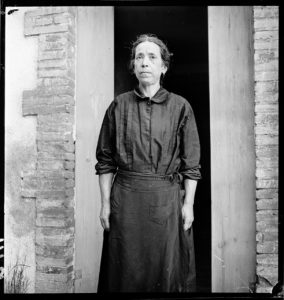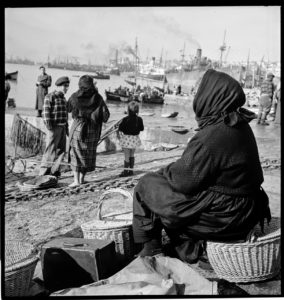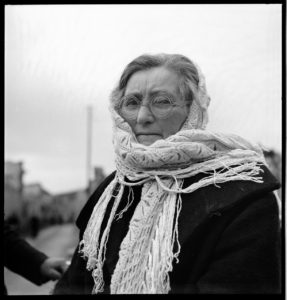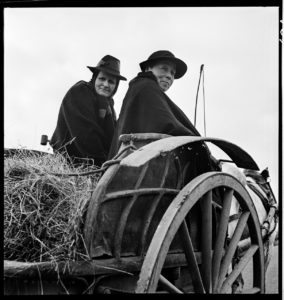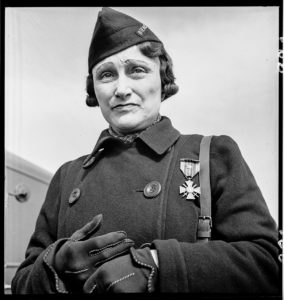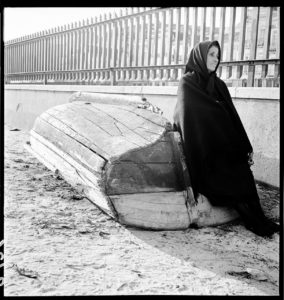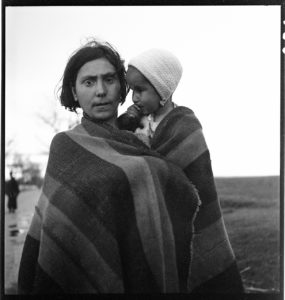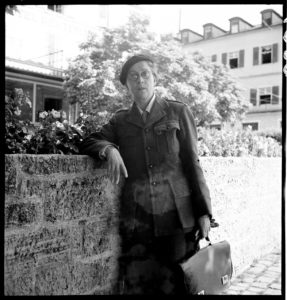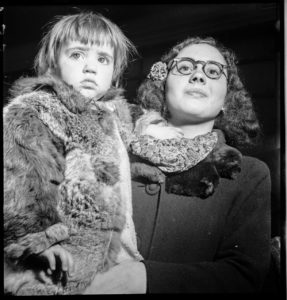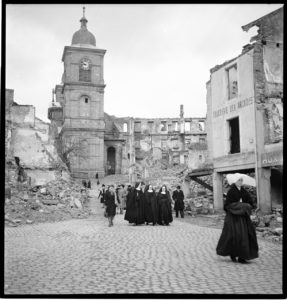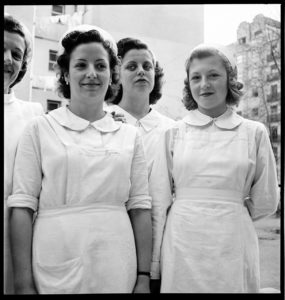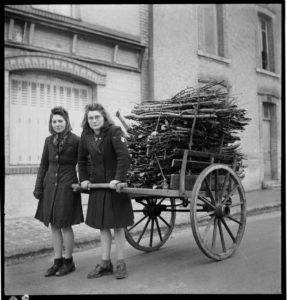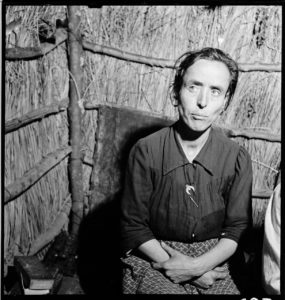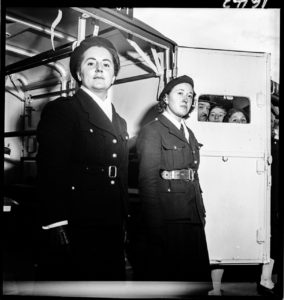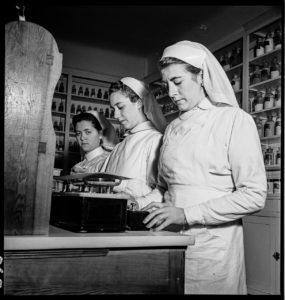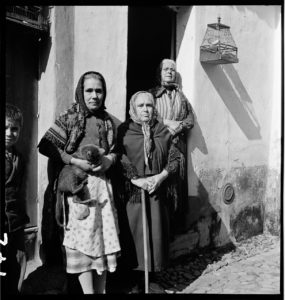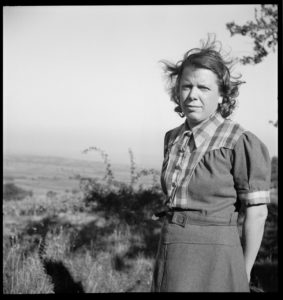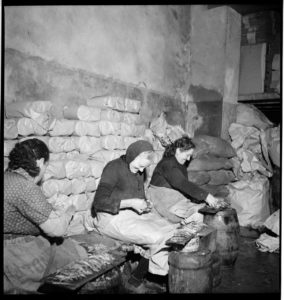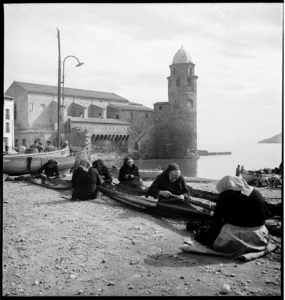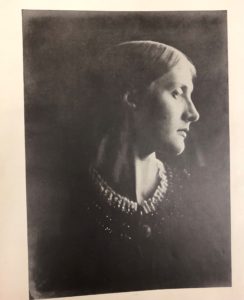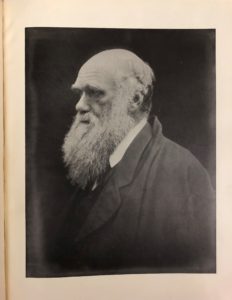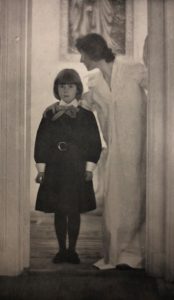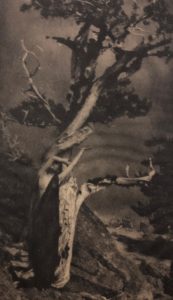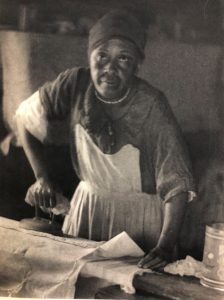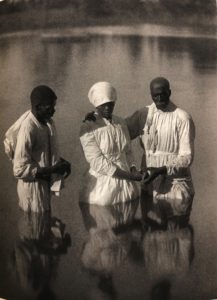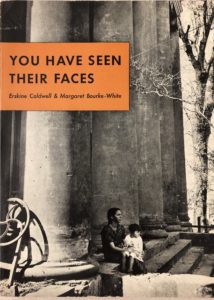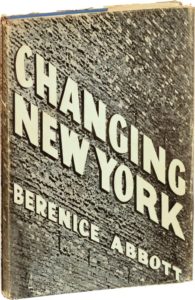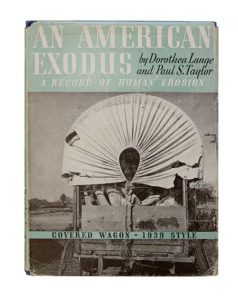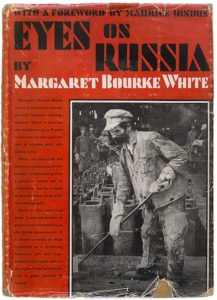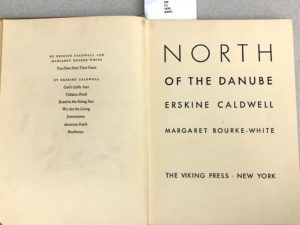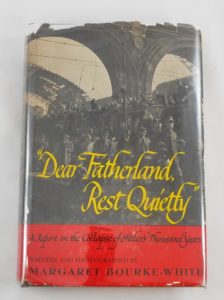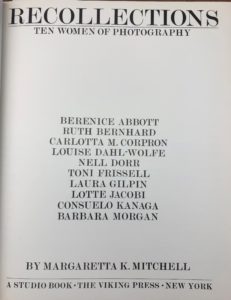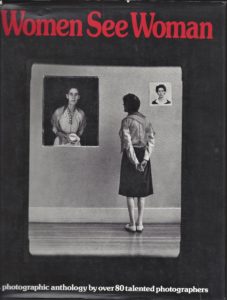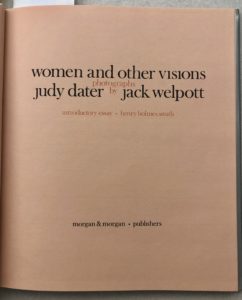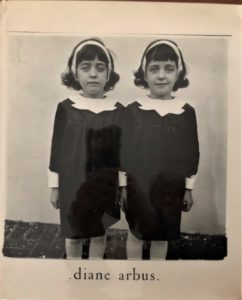Tag: photography
A Californiana Returns to the Bay Area: Ana María de la Guerra de Robinson
Women’s history month is the perfect time to announce an exciting addition to Bancroft Library’s collection of daguerreotype portraits. At the end of 2023 the library was able to acquire a beautiful 1850s portrait of a Californiana: doña Ana María de la Guerra de Robinson, also known as Anita.
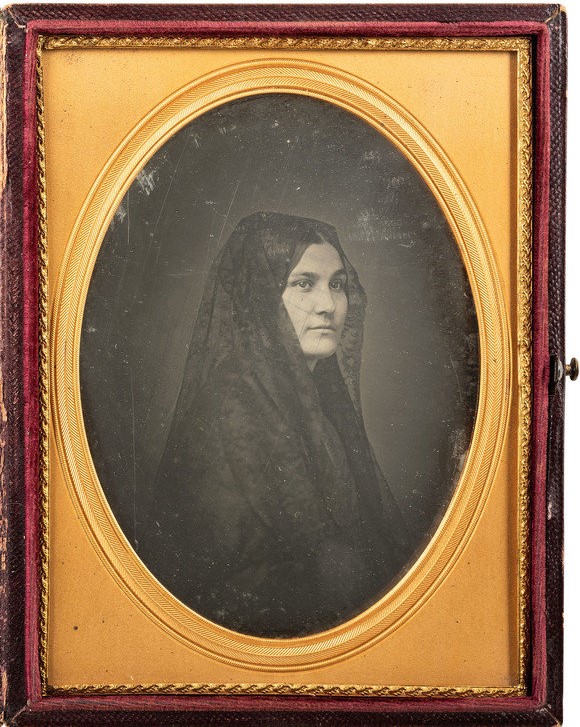
In this large (half plate format) daguerreotype of about 1850-1855, Anita wears a lace mantilla, in the Spanish fashion. A beautiful large daguerreotype like this was an extravagance at the time, and the portrait is all the more evocative because Anita, tragically, died within a few years of its creation.
Fortunately, quite a bit is known about her life. Anita was born into the prominent de la Guerra family of Santa Barbara in 1821 -– the same year the Spanish colonial period ended and control by an independent Mexico began. She was married at age 14, to an American trader and businessman named Alfred Robinson, 14 years her senior. This wedding is described in Richard Henry Dana’s Two Years Before the Mast, so we have an unusually detailed account of what was a grand occasion.
She and her husband snuck away from her family in 1838, leaving their baby daughter behind with her grandparents. Anita, age 15, wrote ”We have left the house like criminals and left here those who have possession of our hearts.” Various writers have interpreted these circumstances differently but, whatever the reason for this strange departure, Anita spent the next 15 years in Boston and the East Coast, seemingly eager to return home, but continually disappointed in the hope. It is hard to imagine that her life was entirely happy, in spite of the steady growth of her family and the prosperity and social prominence the Robinsons and de la Guerras enjoyed.
Having borne seven children, and having witnessed from afar (and apparently mourned) the transition of her homeland from Mexican territory to American statehood, Anita finally returned to California in the summer of 1852. It is likely she had her daguerreotype portrait taken at this time, in San Francisco, although it could have been taken back east. Sadly, she lived just three more years in California, dying in Los Angeles in November 1855, a few weeks after giving birth to a son. She is buried at Mission Santa Barbara.
A study of Anita’s life was published by Michele Brewster in the Southern California Quarterly in 2020 (v.102 no. 2, pg. 101-42) . Read more of her story!
With such a fascinating and relatively well-documented life, we’re thrilled to have Anita’s beautiful portrait here at Bancroft. It joins other de la Guerra family portraits, as well as numerous papers related to the family, including “Documentos para la historia de California” (BANC MSS C-B 59-65) by her father, José de la Guerra y Noriega.
Two of Anita’s sisters had “testimonias” recorded by H.H. Bancroft and his staff; one from Doña Teresa de la Guerra de Hartnell (BANC MSS C-E 67) and another from Angustias de la Guerra de Ord (BANC MSS C-D 134).
Anita’s daguerreotype itself presents an interesting conundrum and history. The photographer is unknown, as is common with daguerreotypes. The portrait has been known over the years because later copies exist in several historical collections, including the California Historical Society, the Massachusetts Historical Society, and Bancroft Library’s own Portrait File.
The daguerreotype acquired last Fall was owned for some decades by a collector. When he acquired it, it was unidentified. Later he encountered a reproduction of it in a historical publication, and thus had the identification of the sitter. Each of the known copies is somewhat different from the others. In her article, Brewster reproduces the copy from the Massachusetts Historical Society. It is a paper print on a carte de visite mount bearing the imprint of San Francisco photographer William Shew, at 115 Kearny Street.
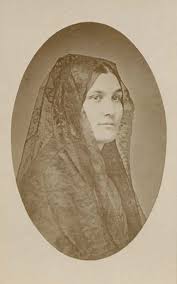
Based on this information, Brewster attributed the portrait to Shew; however, Shew is merely the copy photographer. A daguerreotype, largely out of use by the 1860s, is a unique original, not printed from a negative, so only one exists unless it is copied by camera. The carte de visite format was not in widespread use until the 1860s, and Shew was not at the Kearny address until the 1872-1879 period. So the photographer remains unidentified.
Another puzzle is posed by the early 20th century reproductions in the Bancroft Portrait File and the California Historical Society, which appear identical. These copies present a less closely cropped pose than the original daguerreotype, which is perplexing! Anita’s lap and hands are visible in the copies, but not in the daguerreotype. Although the bottom of the daguerreotype plate is obscured by its brass mat, there is not enough room at the lower edge to include these details.
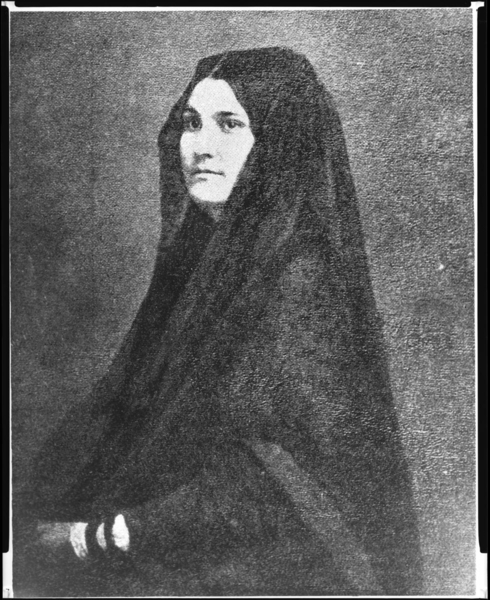
How could a copy contain more image area than the original? Upon reflection, two possibilities come to mind:
1) the daguerreotype was copied in the 19th century and photographically enlarged, then re-touched or painted over to yield a larger portrait that included her lap and hand, added by an artist. This reproduction was later photographed to produce the copies in the Portrait File and CHS.
or,
2) the original daguerreotype included her lap and hand, and it was re-daguerreotyped for family members in the 1850s, perhaps near the time of Anita’s 1855 death. When the copy daguerreotypes were made, they were composed more tightly in on the sitter, omitting the lap and hands. The newly acquired Bancroft daguerreotype could be a copy of a still earlier plate – and this earlier plate could be the source of the later paper copy in the Portrait file.
This will likely remain a mystery until other variants of this portrait surface. Are there other versions of this portrait of Anita de la Guerra de Robinson to be revealed?
Reference
Brewster, Michele M. “A Californiana in Two Worlds: Anita de La Guerra Robinson, 1821–1855.” Southern California Quarterly 102, no. 2 (2020): 101–42. https://www.jstor.org/stable/27085996.
Books from the Richard Sun Photography Donation
Come see books recently on display from the Richard Sun Photography Book Donation. These items are now shelved in the Art History/ Classics Library. Click the titles to see their records in UC Library Search.
Another Country Abendlied Balika Mela
Roxane II The Sign of Life Manifest
September’s New Books in Art History
Check out these new books in the subject of Art History. Click the links below for their records in UC Library Search.
Bill Cunningham Was Here Captioning the Archives Carrie Mae Weems
Photography The Selfie, Temporality, and Contemporary Photography The Lives of Images
Building distinguished collections one title at a time-3: S/No.: SEM NÚMERO: MODA, IMAGEM, CULTURA NO BRASIL.
Our library is set to acquire a set of Brazilian periodicals, “S/no.: Sem Número: Moda, Imagem, Cultura No Brasil.”
S/No.: SEM NÚMERO: MODA, IMAGEM, CULTURA NO BRASIL. N. 1, Jul. 2002-2015.- São Paulo, Editora Bookmark, Livre Conteudo. ISSN 1677-2164.
S / N magazine was launched in 2002 by photographer Bob Wolfenson and journalist Hélio Hara as a platform for unusual creative encounters and has established itself over the years as a relevant publication on fashion and culture in Brazil. LIVRE Content has been part of the magazine’s team since 2010, acting as editor and Ricardo Feldman as Publisher.
Photos below courtesy of Sandra of S.Bach.

Wrapping up Women’s History Month: Selections from the Thérèse Bonney photograph collection at The Bancroft Library
The Thérèse Bonney photograph collection at The Bancroft Library consists chiefly of documentary photographs taken throughout Western Europe during World War II. Bonney (Berkeley class of 1916) photographed all aspects of the war, but focused on its effects on the civilian population.
An active humanitarian, Bonney frequently used universal symbols in her work, allowing her images to speak beyond language barriers and leading their viewers to see beyond cultural differences. Her photographs of children were exhibited and published widely, influencing audiences to contribute to relief efforts for innocent victims of war. But the images throughout her archive feature another prominent symbol — women. Old women, young women, mothers, sisters, friends, neighbors; always at work, usually together, forever the epitome of personal sacrifice for the greater good. In honor of Women’s History Month, the Bancroft Library’s Pictorial Unit presents this collection of newly digitized images from the Thérèse Bonney Photograph Collection. The Finding Aid to the Thérèse Bonney Photograph Collection circa 1850-circa 1955 is available through the Online Archive of California. The finding aid includes digital images for Series 6: France, Germany 1944-1946. Images for Series 3: Carnegie Corporation Trip: Portugal, Spain, France 1941-1942 are coming soon, with a preview offered here!
Photobooks by Women in the Reva and David Logan Collection
A posting by Christine Hult-Lewis, Ph.D., Reva and David Logan Curatorial Assistant
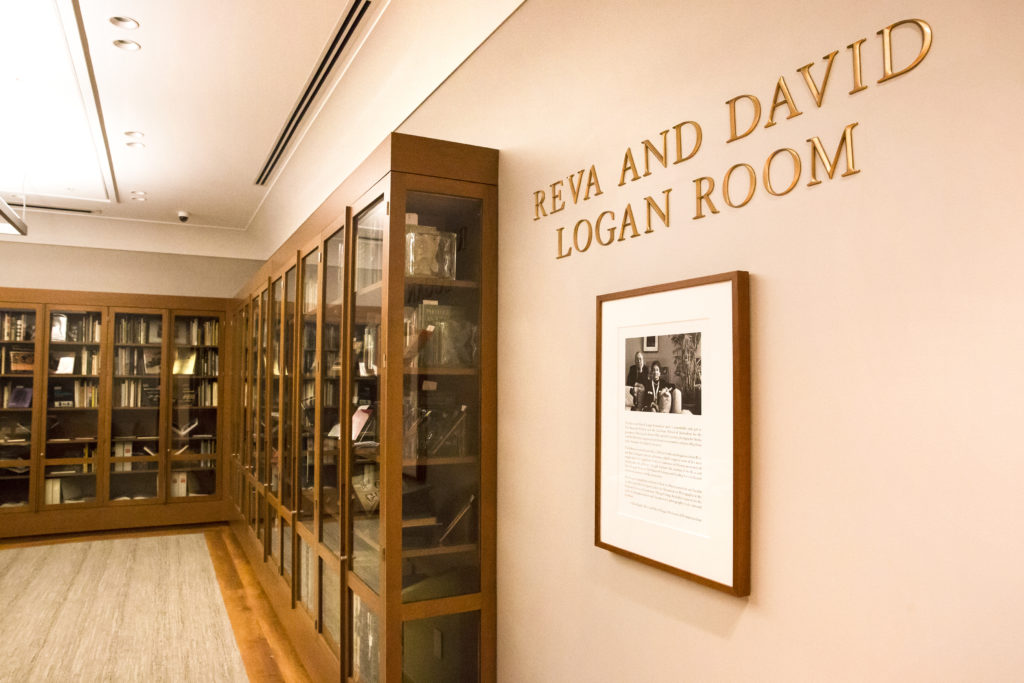
Tucked in the shelves of the Bancroft Library’s Reva and David Logan Collection of Photographic Books are some exceptional photography books by women photographers. Books illustrated with photographs were and are incredibly important in the history of photography: they are the best means to disseminate an artist’s work, are more readily available than photographic prints, and can wield an outsize influence in the public arena. Here is a selection of some of the most significant books by women in the collection.
EARLY MASTERS
One of the best known and most influential photographers of the nineteenth century is Julia Margaret Cameron, whose insightful and penetrating soft-focus portraits redefined the genre. Cameron was most interested in getting at the “truth” and “beauty” of her subjects; her best portraits strip away all context in favor of a focus on the face itself, as in the above image of her niece Julia Jackson (Virginia Woolf’s mother). Some forty-seven years after Cameron’s death, Victorian Photographs of Famous Men and Fair Women was published by Woolf, who also contributed an introduction.
Most women didn’t produce their own books until the early decades of the twentieth century, but some shared their work in the pages of Camera Work. This seminal photography periodical, edited by Alfred Stieglitz from 1903-1917, regularly featured women in its pages, such as Gertrude Käsebier, whose work appeared in the inaugural issue, and Annie Brigman. Both used the familiar techniques of Pictorialism—soft focus, romantic subject matter—in their beautifully printed photogravures. Each addressed different aspects of the female experience: Käsebier emphasized the maternal bond and motherhood, while Brigman focused on the symbolically-charged interplay between women’s bodies and the natural world.
The Pictorialist aesthetic championed by Käsebier, Brigman, and others would continue into the 1920s and 30s with photographers like Doris Ulmann. Ullman was interested in rural America and folk cultures, part of a general reassessment of what constituted authentic “American-ness” during the 1930s. The result was the 1933 collaboration Roll, Jordan, Roll, with Ullman providing the delicately-printed photogravures and author Julia Peterkin providing text. The book describes the lives of the Gullah people, many of whom were former slaves living in the coastal areas of South Carolina and Georgia. Ulmann’s images provide a sensitive and nuanced portrayal of lives lived in quiet dignity.
DOCUMENTARY PHOTOBOOKS OF THE 1930s
Some of the most influential photographic books of the Depression era were by women. Margaret Bourke-White’s You Have Seen Their Faces concentrated on what she and Caldwell perceived as the ongoing problems of the South: its extreme poverty, its pernicious and ongoing racism, and its damaged people. The book was popular, though it had, and has, its detractors, who objected to its condescending tone. By contrast, Dorothea Lange was one of the most respected practitioners of documentary in the 1930s, and made sure to give her subjects their own voice(s). Lange worked under the aegis of the US government-sponsored Farm Security Administration, taking photographs intended to help support the various projects of agricultural reform. This book was a true merger of empathetic, artistic images and dispassionate, statistical text. Another government-sponsored project, Berenice Abbott’s Changing New York, shifted the attention from rural people in distress to the changes and dislocations of that quintessential American city, New York. Abbott was particularly attuned to the beauties of the ever-changing city, and the transformations wrought by that peculiarly modern structure, the skyscraper.
PHOTOJOURNALISM
Margaret Bourke-White wasn’t really a documentarian; her true metier was photojournalism. She worked for the earliest pictures magazines in the United States, Fortune and Life. Bourke-White was the first photographer to go to Soviet Russia; sent there by Fortune in 1930, her experiences there became the book Eyes on Russia. Concurrently with her work on picture magazines, she wrote or co-wrote twelve books, five of them during the war years. She spent much of the war in the European theater of operations, where she became accredited as an official Army Air Force photographer. She worked incessantly, took all kinds of risks, made thousands of pictures, and managed to churn out books at an astonishing rate. North of the Danube recounts the months when Germany invaded Austria and Czechoslovakia, while Dear Fatherland, Rest Quietly attempts to grapple with the horrors of the Holocaust. The Logan Collection has fine examples of every one of her books.
THE 1970s
By the 1970s, the lack of women in the photographic canon did not go unnoticed by women artists, feminists, and their allies, and they sought to redress this exclusion and promote a more inclusive point of view. This took place in not only in museum exhibitions but also in photobooks, including anthologies like these that sought to uncover the work of women photographers whose names had dropped off the radar of popular culture and photographic history.
New monographs by young photographers like Judy Dater explicitly explored gender, examining different conceptions of femininity, sexuality, and agency in portraiture. Dater’s work can be seen as a kind of modern extension of Julia Margaret Cameron, in her explorations of the human psyche through expression, gesture, and light itself. Diane Arbus—this book of her photographs would not be released until after her death in 1971–would redefine the documentary project with her highly-charged photographs in the 1960s. Like Bourke-White, she took risks and went where others dared not go; she could almost be described as a photojournalist of the psychological.
The Logan Collection is a wonderful resource to study the photobooks by women, as well as many other themes in the history of photography. I hope this brief overview of this collection sparks further study. For more information, see the online overview of the Logan Collection. Books are available for onsite use in Bancroft’s reading room, and can be requested from OskiCat via our online paging system.
